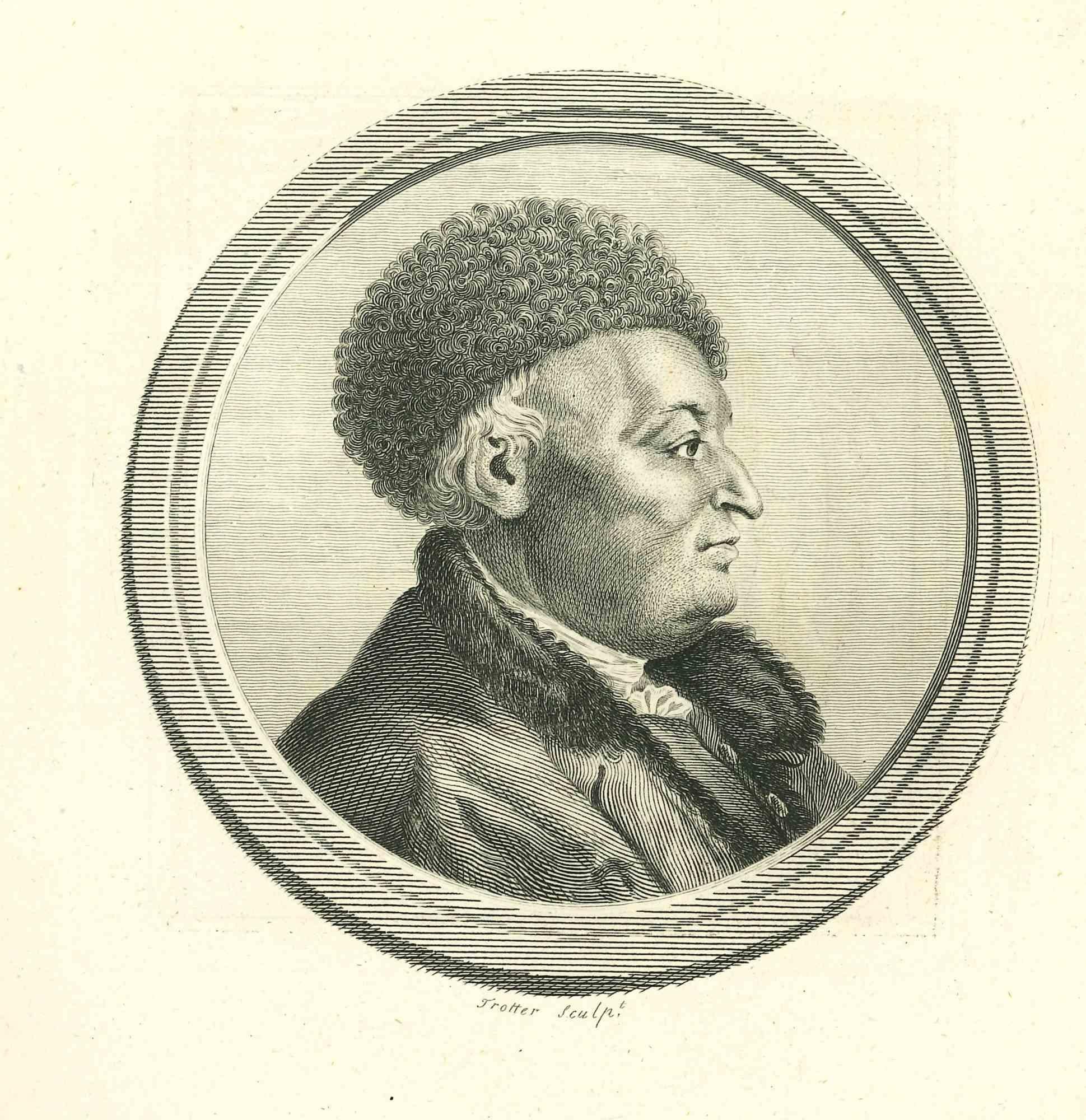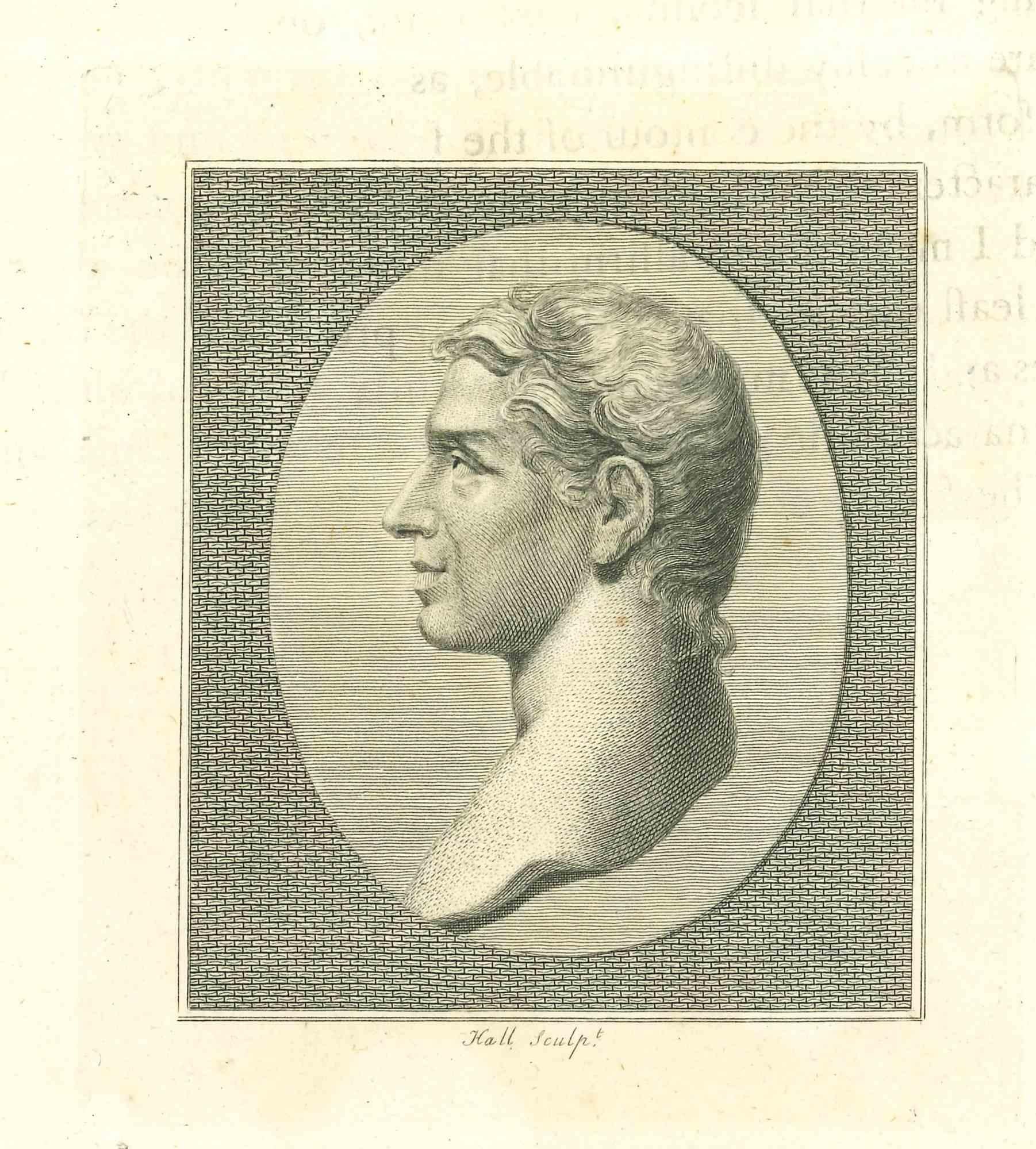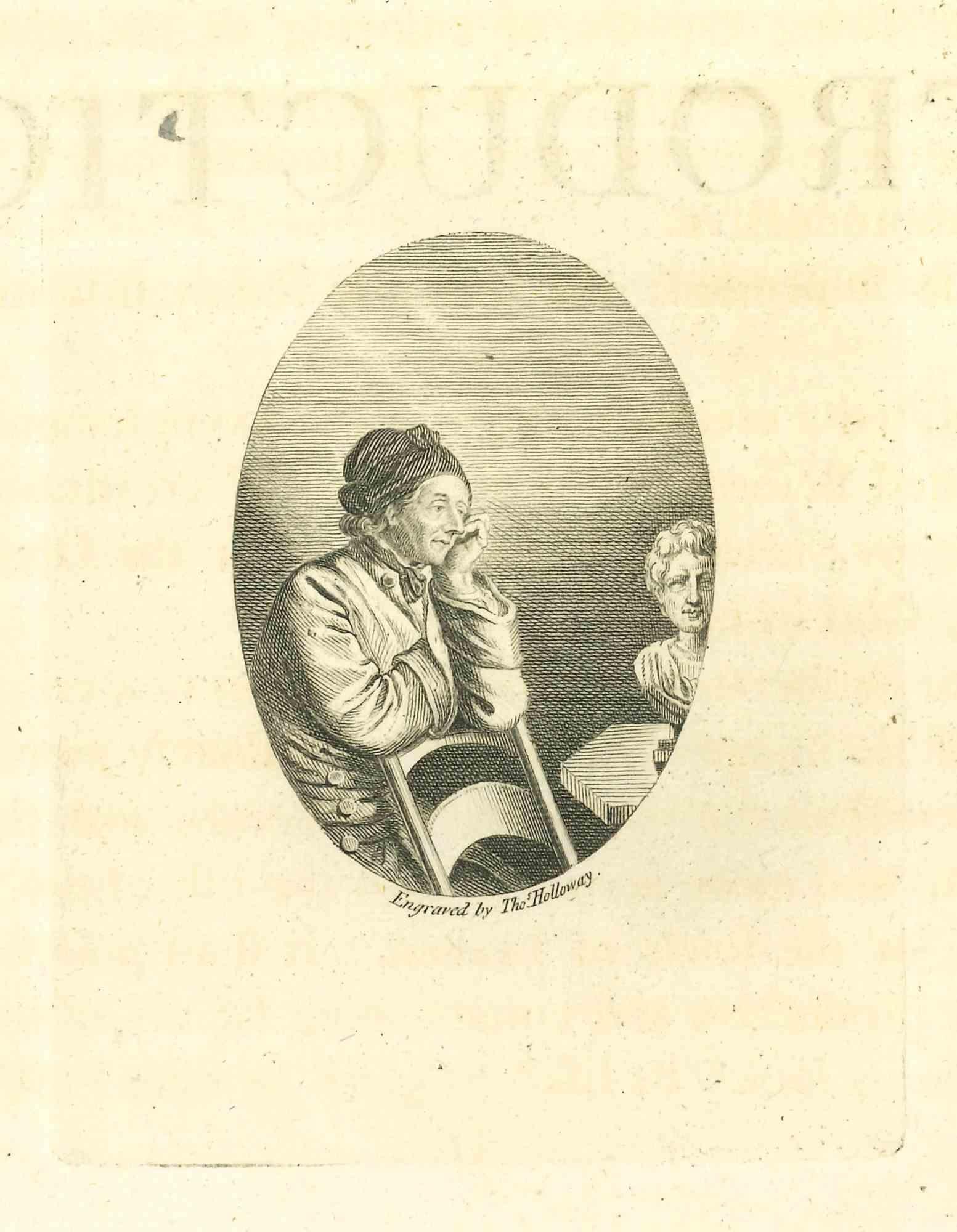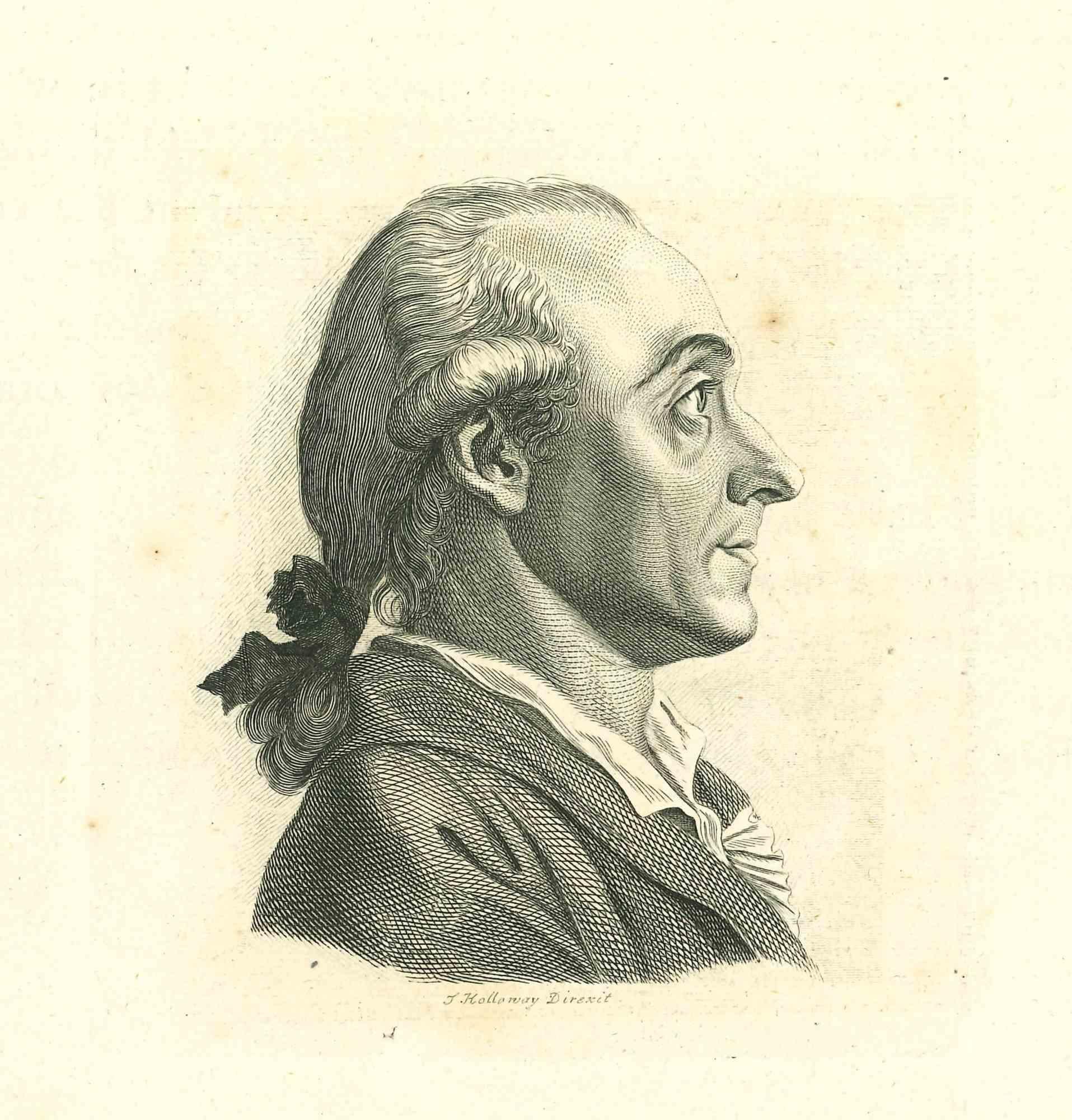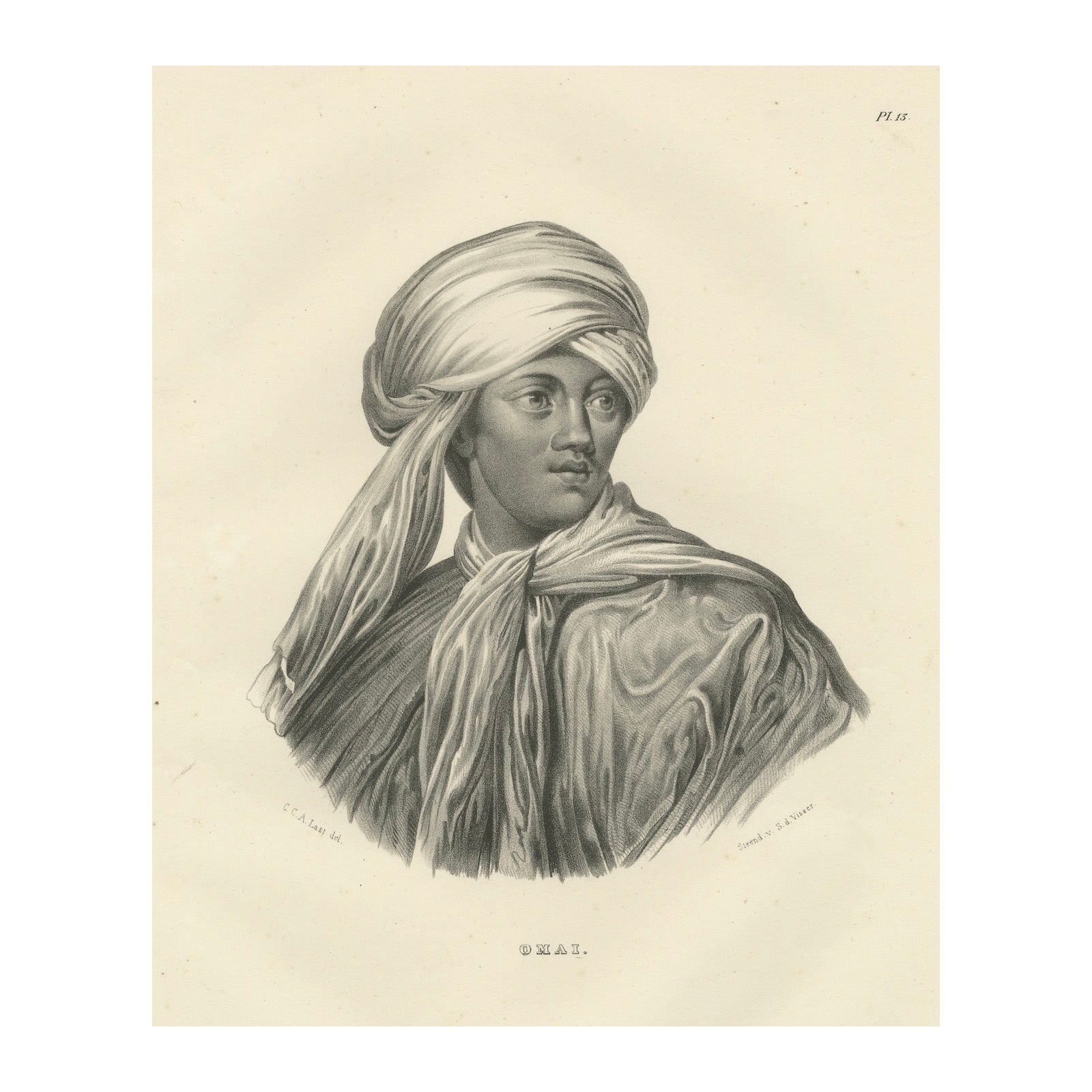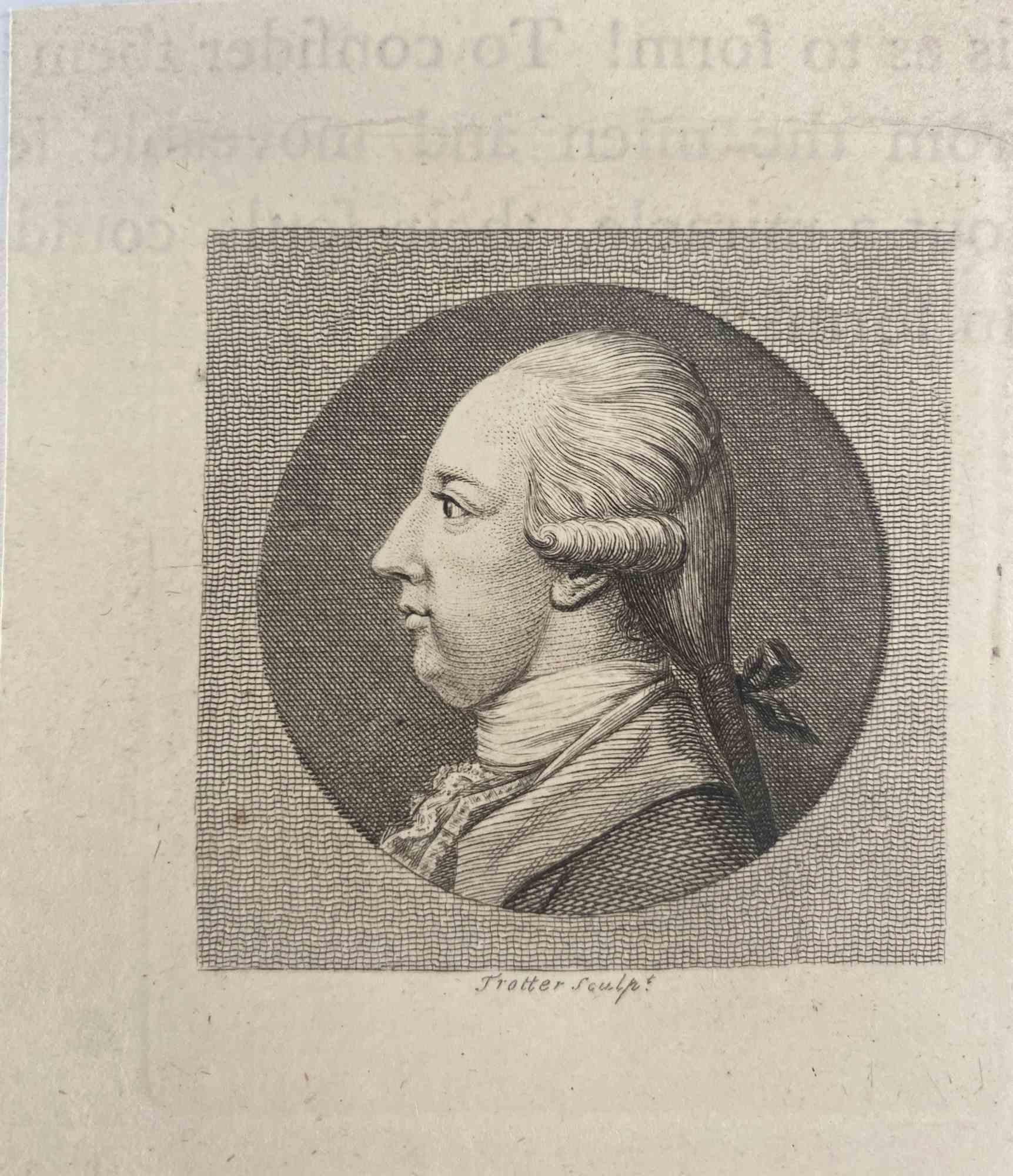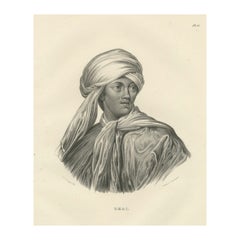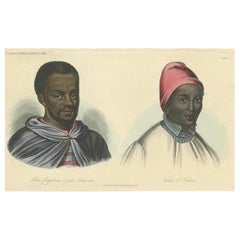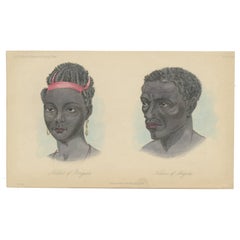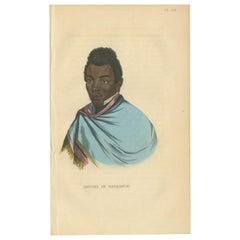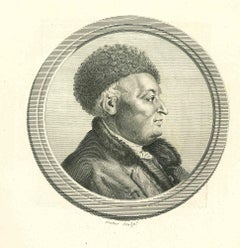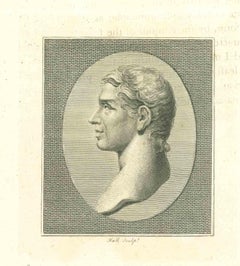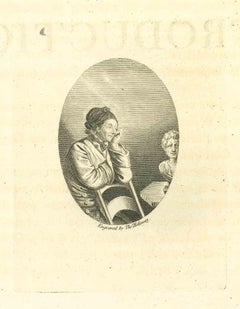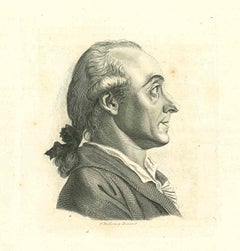Items Similar to Portrait of an African Man, after Rubens – Engraving by Joseph Lange, 1801
Video Loading
Want more images or videos?
Request additional images or videos from the seller
1 of 11
Portrait of an African Man, after Rubens – Engraving by Joseph Lange, 1801
$405.19
£300.07
€340
CA$558.24
A$620.66
CHF 326.82
MX$7,530.49
NOK 4,137.65
SEK 3,867.69
DKK 2,588.02
About the Item
Portrait of an African Man, after Rubens – Engraving by Joseph Lange, 1801
Description:
This captivating portrait engraving depicts an African man turned in profile to his left, with a broad and engaging smile, his head slightly tilted upward in an expressive, animated gesture. His features are rendered with great delicacy using the stipple engraving technique, creating a soft tonal effect with fine gradations of light and shadow. He is dressed in a buttoned waistcoat with an open white collar, typical of European interpretations of dress in the late 17th and early 18th centuries. The plate is inscribed 'Ex Archetypo P.P. Rubens', attributing the original design to the renowned Flemish Baroque master Peter Paul Rubens (1577–1640). Below the portrait is the engraver’s signature: *Joseph Lange sc. 1801*, confirming it was engraved by Joseph Lange in the year 1801.
This print belongs to the long European tradition of ‘tronie’ or character studies, where artists captured heads with distinctive expressions, ethnic diversity, or dramatic lighting, used both for academic study and as independent artworks. Rubens, in particular, created several studies of African models during his prolific career in Antwerp, reflecting the cosmopolitan port city’s diverse population in the early 17th century. These studies were highly regarded for their realism and humanity, and they were reproduced in engravings throughout the 18th and 19th centuries for collectors who appreciated masterworks of drawing and painting in printed form.
The engraving is printed on laid paper with wide margins, and the impression remains strong and clear. Its stipple technique, involving thousands of tiny dots, achieves a painterly effect that beautifully translates Rubens’ original brushwork into print. Measuring approximately 33 x 24 cm sheet size, it is an elegant and historical piece suitable for framing and display in a collection of portrait prints, academic studies, or works relating to Rubens.
Condition report:
The print is in good condition for its age. There is overall light foxing, particularly in the margins, some toning around sheet edges, and minor handling marks consistent with age and archival storage. The engraved image itself remains fresh, with rich dark tones and crisp detail.
Framing suggestion:
This engraving would be well-suited to a simple black or dark wood frame with a warm ivory mount, enhancing the delicate tonal gradation of the print while giving it a classic presentation appropriate to its early 19th-century origin.
- Dimensions:Height: 12.49 in (31.7 cm)Width: 9.34 in (23.7 cm)Depth: 0.01 in (0.2 mm)
- Materials and Techniques:Paper,Engraved
- Place of Origin:
- Period:
- Date of Manufacture:1801
- Condition:The print is in good condition for its age. There is overall light foxing, particularly in the margins, some toning around sheet edges, and minor handling marks consistent with age and archival storage. The engraved image itself remains fresh.
- Seller Location:Langweer, NL
- Reference Number:Seller: BG-14073-61stDibs: LU3054345652232
About the Seller
5.0
Recognized Seller
These prestigious sellers are industry leaders and represent the highest echelon for item quality and design.
Platinum Seller
Premium sellers with a 4.7+ rating and 24-hour response times
Established in 2009
1stDibs seller since 2017
2,569 sales on 1stDibs
Typical response time: <1 hour
- ShippingRetrieving quote...Shipping from: Langweer, Netherlands
- Return Policy
Authenticity Guarantee
In the unlikely event there’s an issue with an item’s authenticity, contact us within 1 year for a full refund. DetailsMoney-Back Guarantee
If your item is not as described, is damaged in transit, or does not arrive, contact us within 7 days for a full refund. Details24-Hour Cancellation
You have a 24-hour grace period in which to reconsider your purchase, with no questions asked.Vetted Professional Sellers
Our world-class sellers must adhere to strict standards for service and quality, maintaining the integrity of our listings.Price-Match Guarantee
If you find that a seller listed the same item for a lower price elsewhere, we’ll match it.Trusted Global Delivery
Our best-in-class carrier network provides specialized shipping options worldwide, including custom delivery.More From This Seller
View AllPortrait of Omai, a Polynesian Man, by Karl Joseph Brodtmann, 1835
Located in Langweer, NL
This lithograph, titled Omai, by Karl Joseph Brodtmann, is an example of the artist’s ethnographic studies, showcasing a portrait of Omai, a notable figure from Polynesia who visited Europe in the 18th century. This work highlights Brodtmann’s interest in portraying individuals from distant lands, focusing on their unique cultural attire and expressions.
Description:
The portrait represents Omai, a Polynesian man who gained historical significance during the 18th century as one of the first Polynesians to travel to Europe. Omai (also known as Mai) was a central figure in the encounters between Polynesian and European cultures, having been brought to England by Captain James Cook in the 1770s.
- Clothing: Omai is depicted in an elegant wrap of flowing fabric, draped around his shoulders and tied in a loose, elegant fashion. His head is adorned with a large turban, a stylistic interpretation that may have been influenced by European artistic conventions when portraying foreign dignitaries or exotic figures. The fabric's folds and shading add a sense of depth and texture, showcasing Brodtmann’s mastery of lithography.
- Expression: Omai’s expression is poised and dignified, with his gaze directed slightly off to the side. The sense of serenity and composure in his face is typical of the European portrayals of him as an "exotic noble savage," a term that reflects the European fascination with non-Western peoples during the age of exploration.
The lithograph highlights both the individuality of Omai and the cultural significance of his travels to Europe, where he became a symbol of cross-cultural exchange and curiosity during the 18th century.
Maker:
Karl Joseph Brodtmann (1787–1862), the Swiss lithographer, was known for his detailed illustrations of people from various cultures, natural history subjects, and scientific studies. His ethnographic works were part of a broader effort in 19th-century Europe to document the physical and cultural characteristics of peoples encountered through exploration. Brodtmann’s portraits often struck a balance between realism and the romanticized European views of non-Western cultures.
Technique and Style:
Brodtmann created this portrait using lithography, a technique that allowed him to achieve fine details and subtle gradations of light and shadow. His style in this portrait combines realism with the romanticized ideal of the "exotic," particularly in the way Omai is dressed in flowing garments, which may not be entirely representative of traditional Polynesian dress...
Category
Antique 1830s Prints
Materials
Paper
$419 Sale Price
20% Off
Antique Print of a Native of Ethiopia and West Africa by Prichard, 1842
Located in Langweer, NL
Antique print titled 'Abbas Gregorius, è gente Amharica - Native of Hausa'. Antique print of Abbas Gregorius, an Amharic Ethiopian, and Hausa man of West Africa. This print originate...
Category
Antique Mid-19th Century Prints
Materials
Paper
$76 Sale Price
20% Off
Antique Print of a Native of Benguela City and a Native of Angola, Africa, 1855
Located in Langweer, NL
Antique print titled 'Benguela - Angola'.
Antique print of a native of Benguela city in headdress and earrings, and a native of Angola. This print originates from 'Natural Histor...
Category
Antique 1850s Prints
Materials
Paper
$181 Sale Price
20% Off
Antique Print of a Native of Madagascar by Prichard, 1843
Located in Langweer, NL
Antique print titled 'Naturel de Madagascar'. Lithograph of a native of Madagascar. This print originates from 'Histoire Naturelle de l’homme Comprenant des recherches sur L’influenc...
Category
Antique Mid-19th Century Prints
Materials
Paper
$114 Sale Price
20% Off
The Khoikhoi of Southwestern Africa, Original Engraving of circa 1801
Located in Langweer, NL
The print is an early 19th-century engraving depicting the Khoikhoi people, historically referred to as the Hottentots, which is an outdated term. The Khoikhoi are indigenous inhabit...
Category
Antique Early 1800s Prints
Materials
Paper
$324 Sale Price
20% Off
Free Shipping
Antique Print of a Man of the Island of Malakula by Cook, 1803
By Cook
Located in Langweer, NL
Antique print titled 'Man van het Eiland Mallicolo'. Antique print depicting a man of the island of Malakula (or Malekula), Vanuatu. Originates from 'Reizen Rondom de Waereld door Ja...
Category
Antique 19th Century Prints
Materials
Paper
$171 Sale Price
20% Off
You May Also Like
Portrait of a Man - Original Etching by Thomas Trotter - 1810
By Thomas Trotter
Located in Roma, IT
Portrait of a man is an original artwork realized by Thomas Holloway for Johann Caspar Lavater's "Essays on Physiognomy, Designed to promote the Knowledge and the Love of Mankind", ...
Category
1810s Modern Figurative Prints
Materials
Etching
Portrait of a Man - Original Etching by John Hall - 1810
Located in Roma, IT
Portrait of a man is an original artwork realized by John Hall for Johann Caspar Lavater's "Essays on Physiognomy, Designed to promote the Knowledge and the Love of Mankind", London,...
Category
1810s Old Masters Figurative Prints
Materials
Etching
Portrait of a Man - Original Etching by Thomas Holloway - 1810
By Thomas Holloway
Located in Roma, IT
Portrait of a man is an original artwork realized by Thomas Holloway for Johann Caspar Lavater's "Essays on Physiognomy, Designed to promote the Knowledge and the Love of Mankind", ...
Category
1810s Old Masters Figurative Prints
Materials
Etching
Portrait of a man - Original Etching by Thomas Holloway - 1810
By Thomas Holloway
Located in Roma, IT
Portrait of a man is an original artwork realized by Thomas Holloway for Johann Caspar Lavater's "Essays on Physiognomy, Designed to promote the Knowledge and the Love of Mankind", L...
Category
1810s Old Masters Figurative Prints
Materials
Etching
Portrait of a Man - Original Etching by Thomas Trotter - 1810
By Thomas Trotter
Located in Roma, IT
Portrait of a man is an original artwork realized by Thomas Trotter for Johann Caspar Lavater's "Essays on Physiognomy, Designed to promote the Knowledge and the Love of Mankind", L...
Category
1810s Modern Figurative Prints
Materials
Etching
Portrait of a Man - Original Etching by John Hall - 1810
Located in Roma, IT
Portrait of a man is an original artwork realized by John Hall for Johann Caspar Lavater's "Essays on Physiognomy, Designed to promote the Knowledge and the Love of Mankind", London...
Category
1810s Old Masters Figurative Prints
Materials
Etching
More Ways To Browse
Classic Engraving
Salviati Mosaic
Samuel Marti French Clocks
Sevres Tuileries
Skull Table
Sleigh Bed Frame
Sottsass Oak
Spalted Maple Furniture
Sphinx Clock
Spotted Fur
Steel Brass Bar Cart
Swatow Porcelain
Tall Filing Cabinets
Teak Bed Frame Queen
Thorvaldsen Museum
Tiered Tea Stand
Tiger Maple Cabinet
Turkish Tea Glasses Set
